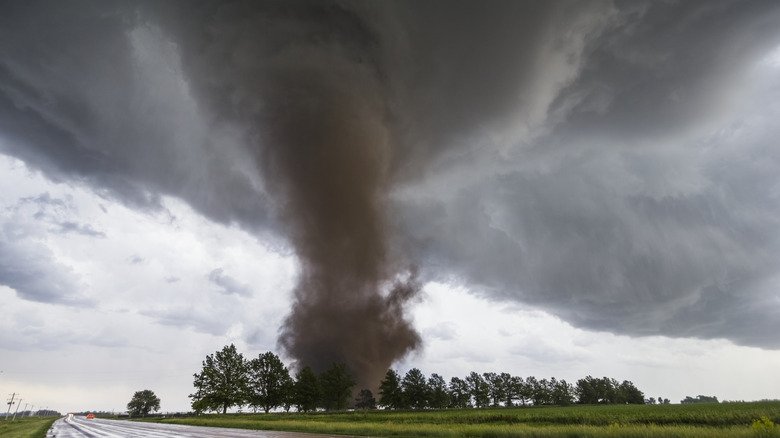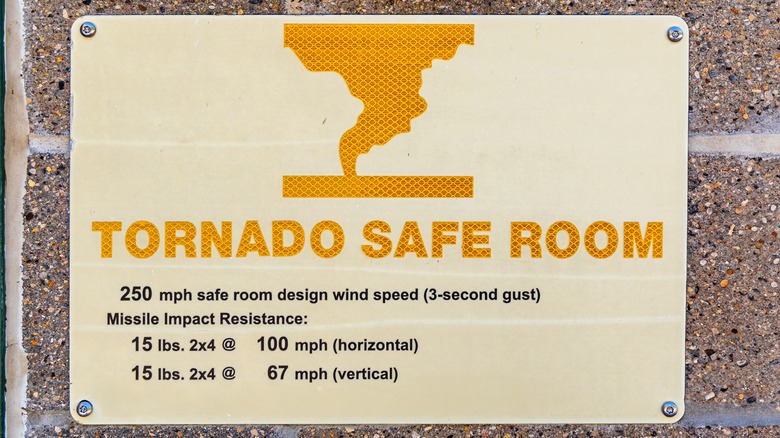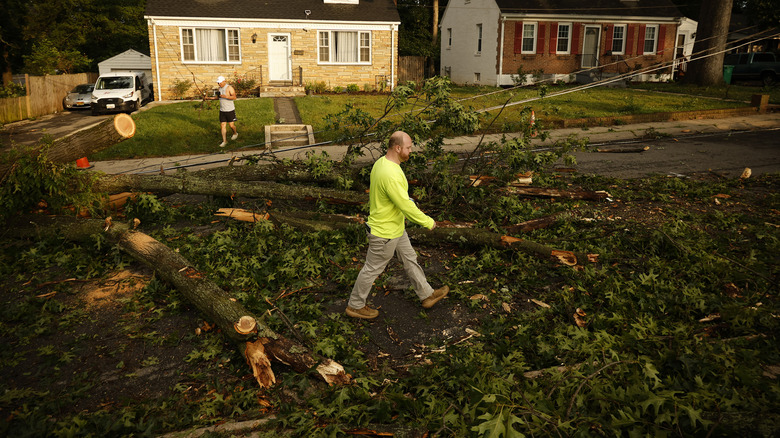What To Know About Tornadoes And Our Top Tips For Staying Safe
Tornadoes are an extremely destructive weather phenomena. In the United States, these cyclonic storms are most common in the Central Plains and Southeast. However, every one of the 50 states have experienced tornadoes at some point. Tornadoes are most likely to occur during late spring and early summer, although they can happen at any time of year when the conditions are right or during periods of severe weather.
When conditions begin to look promising for tornado development, the National Oceanic and Atmospheric Administration (N.O.A.A.) will begin issuing alerts. There are three levels of alerts you should be aware of: watch, warning, and emergency. A tornado watch means tornadoes are possible and you should be prepared. Tornado warnings are issued when a tornado has been seen in the area and you should begin taking action. A tornado emergency will be issued when a strong tornado has touched down. At this point, you must immediately seek shelter.
If you live in or are traveling through a tornado-prone area, you need to be ready and aware. You should check the weather forecast often and have a plan of action for any severe weather. If you live in a tornado-prone area, make sure you have a solid, reinforced room to take shelter. If you are traveling, take note of shelter areas and other possible safe spots along your route. Finally, be sure you have weather alerts sent to your phone and be aware of any tornado sirens.
How to stay safe during a tornado
When a tornado is in the area, whether you have seen it or learned of it from an alert or siren, it is time to take action. Which action you take, however, depends on where you happen to be at that moment. If you are at home when a tornado strikes, move into the basement or a reinforced safe room if you have one. If not, move to a first-floor interior room, preferably without windows. Be sure to gather up your pets and take them with you. If you are at your workplace, school, or a store, go to the designated safe area for that building. Regardless of where you are, once you enter the safe space and the tornado approaches, you should assume the tornado safety position, which is face-down, on your knees with your hands over your neck and head.
The exception to sheltering in your home is if you are in a mobile home. In this instance, you are actually safer outside than in the mobile home. The same goes for being in a vehicle – you should only remain in your car as a last option. It is much safer for travelers to pull over and get out of the vehicle. Any time you are outside during a tornado, whether you were already outside or fled a mobile home or car, try to find a sturdy shelter – not a shed – if possible. If no shelter is nearby, move quickly away from any vehicles or mobile homes and lay face down in a ditch or low area. If in an open field, lie flat on the ground and cover your head.
What to do after a tornado passes
Once a tornado has passed, danger still exists and, likely, there will be work to be done. For starters, you need to monitor weather alerts to make sure the tornado has passed and no others are in the area before leaving your safe space. Several safety apps designed for outdoor adventures can aid in that task. Next, be sure to check yourself and others with you for injuries. Be aware that you may not have cell service after a storm, so be sure you know how to call for help without service. After you have assessed and stabilized your immediate area, check on family and friends.
When it is safe to do so, leave your house and assess the damage. Remember, there are often hazardous materials and items scattered about after a storm, so it is recommended to wear long pants, long-sleeve shirts, boots or sturdy shoes, and gloves when moving through the disaster area. Also, be aware of any downed power lines. Avoid these areas and report them to utility and emergency personnel. As you move through the disaster area and assess damage, it is also a good idea to carry emergency supplies in case you come across anyone who requires assistance.
After the weather has stabilized, downed power lines have been secured, and anyone with injuries has been attended to, the cleanup can begin. This, too, requires caution as many tornado-related injuries actually occur during the cleanup process. Be sure to dress in protective clothing and be aware that debris may be filled with sharp objects such as nails, broken glass, or sheet metal. Additionally, much of the debris may be much heavier than it appears.


